-
 Bitcoin
Bitcoin $84,603.0303
1.65% -
 Ethereum
Ethereum $1,628.2638
2.58% -
 Tether USDt
Tether USDt $0.9997
0.00% -
 XRP
XRP $2.1442
1.55% -
 BNB
BNB $586.1953
0.71% -
 Solana
Solana $129.6970
2.29% -
 USDC
USDC $0.9998
-0.02% -
 TRON
TRON $0.2518
-0.50% -
 Dogecoin
Dogecoin $0.1586
-2.40% -
 Cardano
Cardano $0.6343
-0.80% -
 UNUS SED LEO
UNUS SED LEO $9.3746
-0.17% -
 Avalanche
Avalanche $20.1994
3.26% -
 Chainlink
Chainlink $12.7466
0.99% -
 Stellar
Stellar $0.2381
-0.55% -
 Sui
Sui $2.1883
-1.27% -
 Shiba Inu
Shiba Inu $0.0...01199
-0.40% -
 Toncoin
Toncoin $2.8442
-1.19% -
 Hedera
Hedera $0.1656
0.38% -
 Bitcoin Cash
Bitcoin Cash $324.3031
-5.45% -
 Polkadot
Polkadot $3.7104
0.32% -
 Litecoin
Litecoin $76.9539
-0.90% -
 Dai
Dai $0.9999
-0.01% -
 Hyperliquid
Hyperliquid $15.5187
1.91% -
 Bitget Token
Bitget Token $4.2785
-0.04% -
 Pi
Pi $0.7383
-0.07% -
 Ethena USDe
Ethena USDe $0.9989
0.00% -
 Monero
Monero $215.8052
6.03% -
 Uniswap
Uniswap $5.3859
0.83% -
 OKB
OKB $52.8701
-0.49% -
 Pepe
Pepe $0.0...07327
0.90%
How does the share creation and redemption mechanism of a Bitcoin ETF work?
The creation and redemption mechanism of a Bitcoin ETF, managed by authorized participants, ensures the ETF's price aligns with Bitcoin's value through arbitrage opportunities.
Apr 11, 2025 at 07:00 am
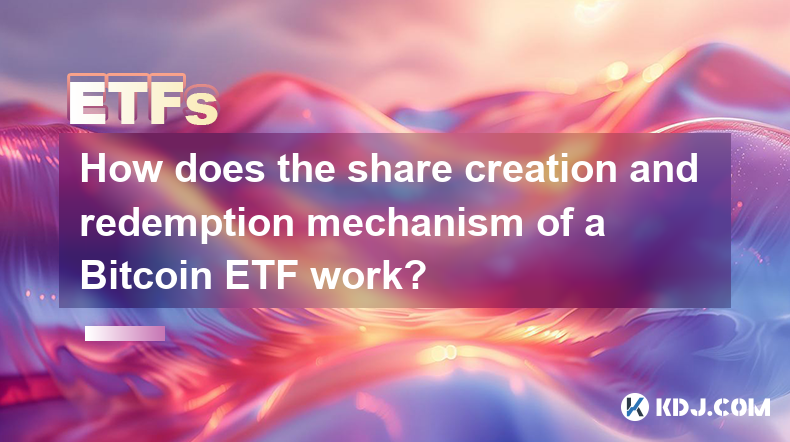
The share creation and redemption mechanism of a Bitcoin Exchange Traded Fund (ETF) is a crucial process that ensures the ETF's price remains closely aligned with the underlying value of Bitcoin. This mechanism involves authorized participants, who are typically large financial institutions, and it operates through a series of steps that allow for the creation and redemption of ETF shares. Understanding this process is essential for investors looking to gain exposure to Bitcoin through an ETF.
The Role of Authorized Participants
Authorized participants are the key players in the creation and redemption process of a Bitcoin ETF. These entities, usually large broker-dealers or financial institutions, have the ability to create and redeem ETF shares directly with the ETF issuer. Their role is pivotal because they help maintain the ETF's market price in line with the net asset value (NAV) of the underlying Bitcoin holdings.
Authorized participants engage in the creation and redemption process to take advantage of arbitrage opportunities. If the ETF's market price deviates from its NAV, authorized participants can step in to buy or sell shares, thereby bringing the price back into alignment. This mechanism is what makes ETFs highly efficient and attractive to investors.
The Creation Process
The creation process of Bitcoin ETF shares begins when an authorized participant decides to create new shares. This typically happens when the ETF's market price is trading at a premium to its NAV, presenting an arbitrage opportunity. Here's how the creation process unfolds:
Step 1: Purchase Bitcoin - The authorized participant purchases the required amount of Bitcoin from the open market. The amount of Bitcoin needed is determined by the ETF's creation unit size, which is a specified number of shares that can be created or redeemed at one time.
Step 2: Deliver Bitcoin to the ETF Issuer - Once the authorized participant has acquired the necessary Bitcoin, they deliver it to the ETF issuer's custodian. This custodian is responsible for securely holding the Bitcoin on behalf of the ETF.
Step 3: Receive ETF Shares - In exchange for the Bitcoin, the ETF issuer creates and delivers the corresponding number of ETF shares to the authorized participant. These shares are then typically sold on the open market, helping to increase the supply of ETF shares and potentially bringing the market price closer to the NAV.
The Redemption Process
The redemption process is the reverse of the creation process and occurs when the ETF's market price is trading at a discount to its NAV. Here's how the redemption process works:
Step 1: Return ETF Shares - The authorized participant returns a specified number of ETF shares to the ETF issuer. This number must match the redemption unit size, which is typically the same as the creation unit size.
Step 2: Receive Bitcoin - In exchange for the returned ETF shares, the ETF issuer instructs its custodian to transfer the corresponding amount of Bitcoin back to the authorized participant.
Step 3: Sell Bitcoin - The authorized participant can then sell the received Bitcoin on the open market. This action helps to decrease the supply of ETF shares, potentially bringing the market price closer to the NAV.
The Impact on Market Price
The creation and redemption mechanism has a direct impact on the market price of the Bitcoin ETF. When the ETF's market price is higher than its NAV, authorized participants can create new shares, increasing the supply and pushing the price down. Conversely, when the market price is lower than the NAV, authorized participants can redeem shares, decreasing the supply and pushing the price up. This continuous process helps to keep the ETF's market price closely aligned with the value of the underlying Bitcoin.
The Importance of Arbitrage
Arbitrage is the driving force behind the creation and redemption mechanism. Authorized participants engage in arbitrage to profit from the price discrepancies between the ETF's market price and its NAV. By creating or redeeming shares, they help to correct these discrepancies, ensuring that the ETF remains an efficient and accurate reflection of Bitcoin's value.
Arbitrage opportunities arise due to market inefficiencies, such as differences in liquidity or information. Authorized participants use sophisticated trading strategies and technology to identify and exploit these opportunities quickly. Their actions not only benefit themselves but also contribute to the overall efficiency and stability of the Bitcoin ETF market.
The Role of the Custodian
The custodian plays a critical role in the creation and redemption process by securely holding the Bitcoin on behalf of the ETF. The custodian's responsibilities include:
Secure Storage - Ensuring that the Bitcoin is stored in a secure and reliable manner, often using cold storage solutions to protect against hacking and theft.
Transfers - Facilitating the transfer of Bitcoin between the authorized participants and the ETF issuer during the creation and redemption processes.
Record Keeping - Maintaining accurate records of all Bitcoin transactions and holdings to ensure transparency and compliance with regulatory requirements.
The custodian's role is essential for maintaining the integrity and security of the Bitcoin ETF, as any issues with the custodian could have significant implications for the ETF's operations and investor confidence.
Frequently Asked Questions
Q: Can individual investors participate in the creation and redemption process of a Bitcoin ETF?
A: No, individual investors cannot directly participate in the creation and redemption process. This process is reserved for authorized participants, who are typically large financial institutions with the necessary infrastructure and resources to engage in these activities.
Q: How often does the creation and redemption process occur?
A: The frequency of the creation and redemption process can vary depending on market conditions and the level of arbitrage opportunities. In highly liquid markets, the process may occur multiple times a day, while in less liquid markets, it may happen less frequently.
Q: What happens if the custodian fails to secure the Bitcoin holdings?
A: If the custodian fails to secure the Bitcoin holdings, it could lead to significant losses for the ETF and its investors. To mitigate this risk, ETF issuers typically select reputable and well-established custodians with robust security measures in place.
Q: Can the creation and redemption process affect the overall price of Bitcoin?
A: The creation and redemption process primarily affects the price of the Bitcoin ETF, not the overall price of Bitcoin. However, large-scale creation or redemption activities could potentially influence the demand and supply dynamics of Bitcoin in the market, indirectly affecting its price.
Disclaimer:info@kdj.com
The information provided is not trading advice. kdj.com does not assume any responsibility for any investments made based on the information provided in this article. Cryptocurrencies are highly volatile and it is highly recommended that you invest with caution after thorough research!
If you believe that the content used on this website infringes your copyright, please contact us immediately (info@kdj.com) and we will delete it promptly.
- Vaulta Emerges from Its Past with a Renewed Focus on Practical Finance and Compliance-First Blockchain Infrastructure
- 2025-04-15 04:50:13
- Render Network (RNDR), SEI and Bittensor (TAO) lead crypto AI sector despite 5% daily drop
- 2025-04-15 04:50:13
- HYPE is showing early signs of a bullish reversal, with a potential inverse head and shoulders pattern forming
- 2025-04-15 04:45:13
- BlockDAG (BDAG) Captures Developer Attention with Complete Smart Contract Features and Growing $214M Presale
- 2025-04-15 04:45:13
- title: RWA-Focused Crypto Project MANTRA (OM) Loses $5.431B of Market Cap in Overnight Collapse of Its Native Token
- 2025-04-15 04:40:15
- Trump's Tariffs Just Supercharged Bitcoin – Here's What's Coming
- 2025-04-15 04:40:15
Related knowledge
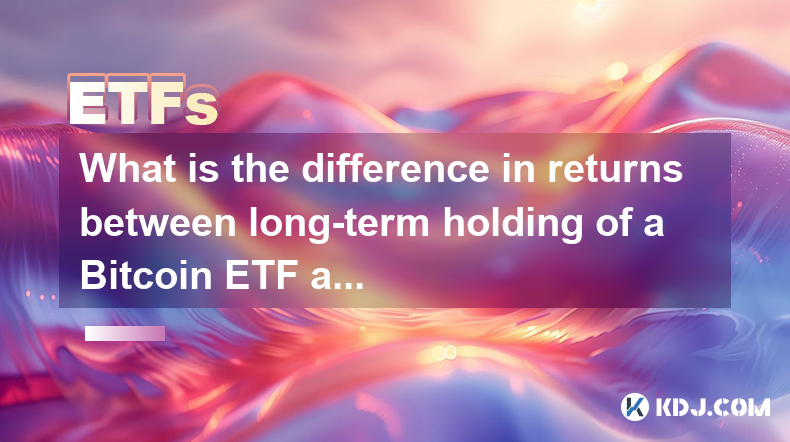
What is the difference in returns between long-term holding of a Bitcoin ETF and holding Bitcoin directly?
Apr 09,2025 at 04:15am
When considering the difference in returns between long-term holding of a Bitcoin ETF and holding Bitcoin directly, it's essential to understand the nuances and factors that affect each investment option. Both approaches have their unique advantages and potential drawbacks, which can significantly impact the overall returns over time. Understanding Bitc...
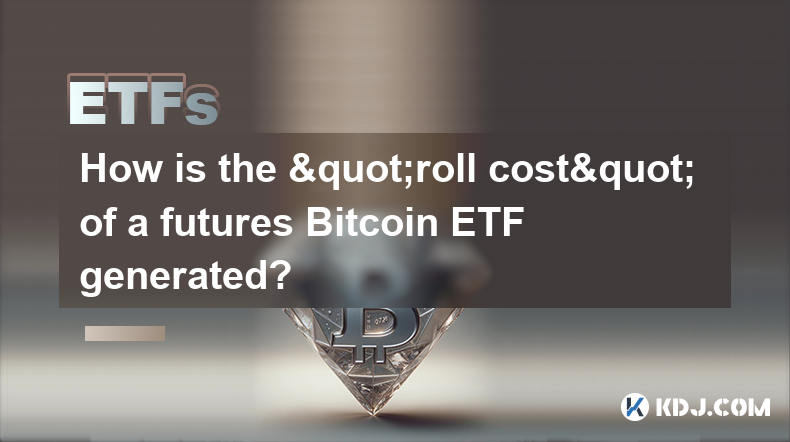
How is the "roll cost" of a futures Bitcoin ETF generated?
Apr 08,2025 at 01:22pm
The 'roll cost' of a futures Bitcoin ETF is a critical concept for investors to understand, as it directly impacts the performance of the ETF. In this article, we will delve into the mechanics of how the roll cost is generated, exploring the underlying processes and factors that contribute to this cost. Understanding Futures ContractsFutures contracts a...
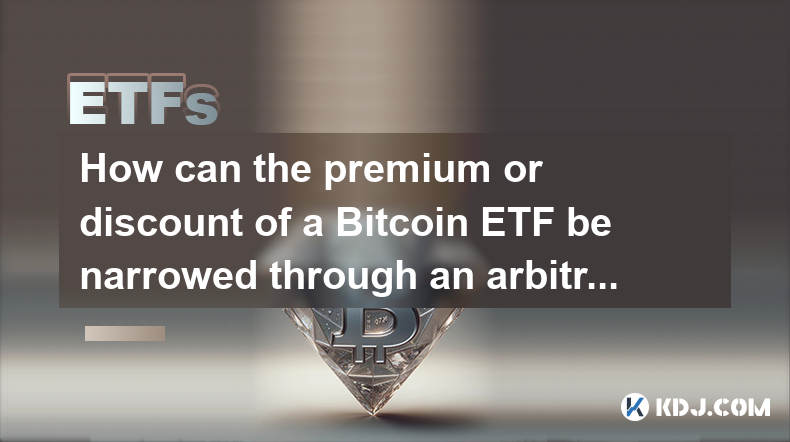
How can the premium or discount of a Bitcoin ETF be narrowed through an arbitrage mechanism?
Apr 09,2025 at 12:07am
Arbitrage mechanisms play a crucial role in narrowing the premium or discount of a Bitcoin Exchange Traded Fund (ETF). Understanding how these mechanisms work can provide valuable insights into the dynamics of Bitcoin ETFs and their relationship with the underlying asset. This article will delve into the specifics of how arbitrage can be used to align t...

What factors affect the bid-ask spread of a Bitcoin ETF?
Apr 08,2025 at 08:50pm
The bid-ask spread of a Bitcoin Exchange Traded Fund (ETF) is a critical metric that investors and traders closely monitor. It represents the difference between the highest price a buyer is willing to pay (bid) and the lowest price a seller is willing to accept (ask). Several factors influence this spread, and understanding them can help investors make ...
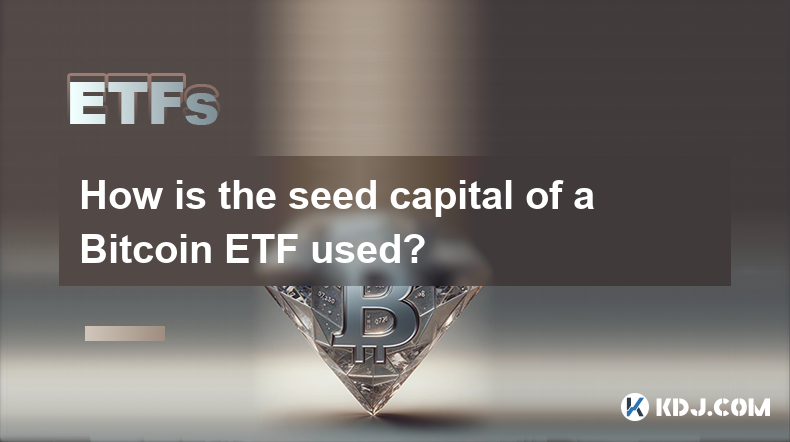
How is the seed capital of a Bitcoin ETF used?
Apr 10,2025 at 02:15pm
The seed capital of a Bitcoin ETF plays a crucial role in the establishment and operation of the fund. This initial investment is used to create the fund's underlying assets, manage operational costs, and ensure the ETF can start trading on an exchange. Understanding how this seed capital is utilized provides insight into the mechanics of Bitcoin ETFs a...
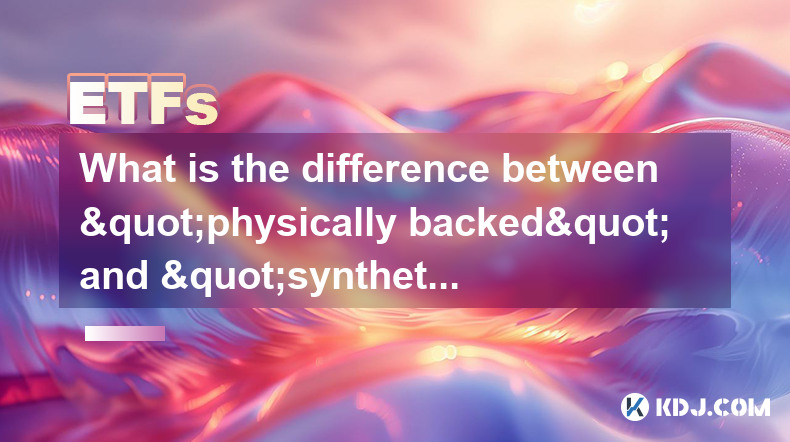
What is the difference between "physically backed" and "synthetic" Bitcoin ETFs in terms of holding assets?
Apr 10,2025 at 04:56pm
Bitcoin Exchange Traded Funds (ETFs) have become a popular way for investors to gain exposure to the cryptocurrency market without directly owning the underlying asset. There are two primary types of Bitcoin ETFs: physically backed and synthetic. Understanding the differences between these two types, particularly in terms of how they hold assets, is cru...

What is the difference in returns between long-term holding of a Bitcoin ETF and holding Bitcoin directly?
Apr 09,2025 at 04:15am
When considering the difference in returns between long-term holding of a Bitcoin ETF and holding Bitcoin directly, it's essential to understand the nuances and factors that affect each investment option. Both approaches have their unique advantages and potential drawbacks, which can significantly impact the overall returns over time. Understanding Bitc...

How is the "roll cost" of a futures Bitcoin ETF generated?
Apr 08,2025 at 01:22pm
The 'roll cost' of a futures Bitcoin ETF is a critical concept for investors to understand, as it directly impacts the performance of the ETF. In this article, we will delve into the mechanics of how the roll cost is generated, exploring the underlying processes and factors that contribute to this cost. Understanding Futures ContractsFutures contracts a...

How can the premium or discount of a Bitcoin ETF be narrowed through an arbitrage mechanism?
Apr 09,2025 at 12:07am
Arbitrage mechanisms play a crucial role in narrowing the premium or discount of a Bitcoin Exchange Traded Fund (ETF). Understanding how these mechanisms work can provide valuable insights into the dynamics of Bitcoin ETFs and their relationship with the underlying asset. This article will delve into the specifics of how arbitrage can be used to align t...

What factors affect the bid-ask spread of a Bitcoin ETF?
Apr 08,2025 at 08:50pm
The bid-ask spread of a Bitcoin Exchange Traded Fund (ETF) is a critical metric that investors and traders closely monitor. It represents the difference between the highest price a buyer is willing to pay (bid) and the lowest price a seller is willing to accept (ask). Several factors influence this spread, and understanding them can help investors make ...

How is the seed capital of a Bitcoin ETF used?
Apr 10,2025 at 02:15pm
The seed capital of a Bitcoin ETF plays a crucial role in the establishment and operation of the fund. This initial investment is used to create the fund's underlying assets, manage operational costs, and ensure the ETF can start trading on an exchange. Understanding how this seed capital is utilized provides insight into the mechanics of Bitcoin ETFs a...

What is the difference between "physically backed" and "synthetic" Bitcoin ETFs in terms of holding assets?
Apr 10,2025 at 04:56pm
Bitcoin Exchange Traded Funds (ETFs) have become a popular way for investors to gain exposure to the cryptocurrency market without directly owning the underlying asset. There are two primary types of Bitcoin ETFs: physically backed and synthetic. Understanding the differences between these two types, particularly in terms of how they hold assets, is cru...
See all articles























































































